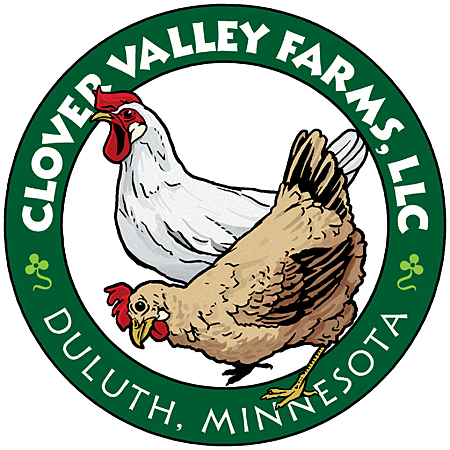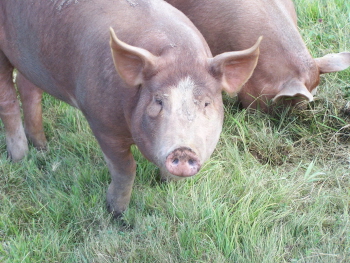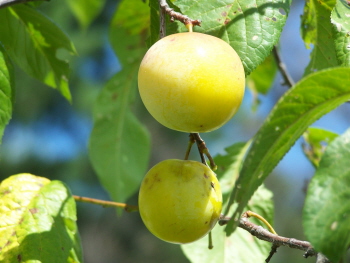Apples & Other Fruits
Species
|
Cindy and Jeff focus on apples and other tree fruits, but they grow some small fruits as well. Their fruit inventory in 2010, involving about 120 plants, included apples, cherries, pears, and plums, plus currants and juneberries. |
 |
Eight apple trees were already on the farm in 1996. Cindy and Jeff planted small numbers of fruit trees or bushes during most years from 1999 to 2009, then did a large planting in 2010. The large planting involved 45 new or transplanted apple trees in a newly established, fenced orchard; plus 17 other trees or bushes planted elsewhere around the farm.
The fruit tree operation has its own calendar, different though generally compatible with poultry and hog production. Outside of fall harvest, and once trees are established, the season starts in February with winter pruning, which keeps trees productive and in good condition. During spring and summer, Jeff and Cindy monitor blooms, fruit set and development, and pests.
Farmer’s Perspective: On The Bookshelf The Apple Grower: A Guide for the Organic Orchardist By Michael Phillips Jeff and Cindy rate this book, published by Chelsea Green, very highly. It explores topics such as the use and limitations of kaolin clay, techniques of understory management, and making small orchards viable through heritage and regional varieties, value-added products, and the "community orchard" model. Ecological Fruit Production in the North Bart and Jean Richard Hall-Beyer Cindy and Jeff had to write to the authors directly to get this book, but they have found it an excellent resource and well worth the effort. |
Educator’s Perspective: Resource Tip The Midwest Organic Tree Fruit Growers Network offers informational materials for organic tree fruit production and marketing. Topic areas include general information on orchard planning, risk management, crop insurance, organic certification, soil health, grafting, pest management, and pollination. There are also specific resources for apples, pears, and stone fruits. The network, sponsored by MOSES, also produces a newsletter called Just Picked, maintains a Listserv, organizes events, shares research information, and collaborates with the Organic Tree Fruit Association. The Fruit Resources page at Cornell University addresses tree fruits, grapes, and berries, with additional links to minor fruits and related topics. The Tree Fruit page covers a similar range of topics as the Midwest Organic Tree Fruit Growers Network but includes perspectives outside of the Midwest and for conventional production. There is also information on food safety, post-harvest, business management, and labor. Cornell University also offers well-done Organic Production Guides for a variety of fruits and vegetables. As of 2011, guides were available for apples, blueberries, strawberries, and grapes. The thorough A Grower’s Guide to Organic Apples (PDF, 1.29 Mb) has chapters on organic certification, site selection and orchard design, rootstock and cultivar selection, soil fertility and crop nutrient management, groundcover and weed management, pesticides, insecticides, IPM, pests and diseases, wildlife damage management, harvest and postharvest handling, and production and marketing costs. Penn State updated their useful Tree Fruit Production Guide in 2010-2011. Part I contains cultural information, including orchard establishment, orchard floor and weed management, plant nutrition, growth regulators, and frost protection. Other parts of the guide address chemical management, IPM spray programs, harvest and postharvest handling, cider production, and production budgets. |
 |
 |


